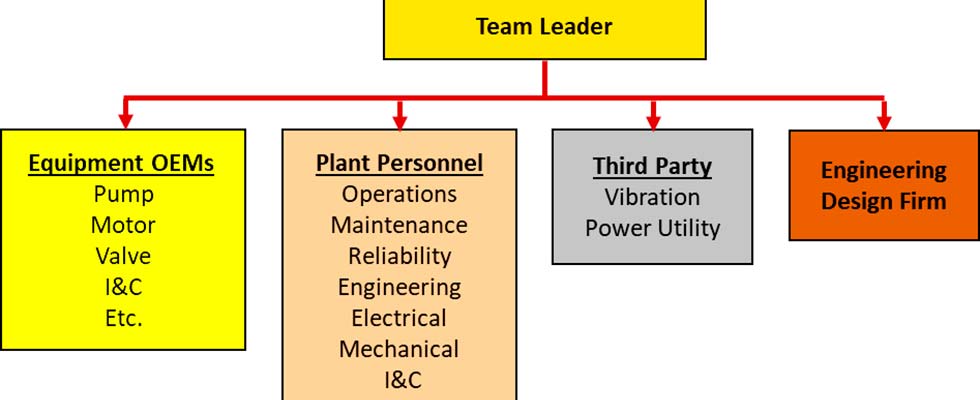
In last month’s article, I used a case study to establish a business case for root cause failure analysis (RCFA). It doesn’t take an MBA to see the cost associated with the classic knee-jerk reaction of getting the plant back online as quickly as possible versus a structured approach to determining root cause and taking corrective action to mitigate future failures.
Having made a solid business case for RCFA, we will take the remainder of this series to detail the RCFA process.
The RCFA Process
Over the years, I have seen many RCFA processes. Some were quite simple, others were complex, and a few were a total waste of time. The process I will address is a methodology I have used successfully over a large portion of my career. However, a successful outcome can only be achieved if you adhere to the process.
I learned early on that if all parties were not on board with the RCFA, the analysis process would fail. Since failure is not an option (in many cases it could be career ending), the RCFA facilitator must build/establish a team. This could be a challenge if the key players do not understand the benefits of a team strategy.
Assemble a Team
“There’s no ‘I’ in team,” would be an understatement for a successful RCFA. There is little chance of success attempting an RCFA solo. But first, you need a team leader. Let me emphasize the word leader.
What Defines a Leader?
“He who thinks he leads, but has no followers, is only taking a walk” is a well-known quote by John Maxwell.
A leader is someone who leads others. Let me repeat: it is someone who leads others. This is telling in how a leader should operate. On the other hand, if a leader leads, then the people they lead should be willing to follow. Unfortunately, this is not always the case.
Qualities of a Leader
There are a four important qualities a good leader should possess:
- Vision: Ability to share with others
- Motivation: A leader can motivate the team better than anyone else.
- Serving as a leader: The team leader is at the service of the team.
- Empathy: Emotional intelligence. A leader can put themselves in the place of others, understand their concerns and solve problems.
 IMAGE 1: The individuals who should be potential team members for the root cause failure analysis. (Image courtesy of the author)
IMAGE 1: The individuals who should be potential team members for the root cause failure analysis. (Image courtesy of the author)With a team leader in place, the next step is to build the team. Team members should consist of those individuals who have a vested interest in the analysis as noted in Image 1.
The graphic provides a general outline of potential team members. However, depending on the analysis/system, personnel may vary. For example, if the RCFA involves a new system, you would most certainly want the engineering design firm as part of the team. In an old application, say a pump or motor failure, you may not require their support.
Now that we have identified the team, the next step is to understand the history of the failed component and understand the financial implications. These will be addressed in next month’s column.
Read more Pump System Standards by William Livoti here.

